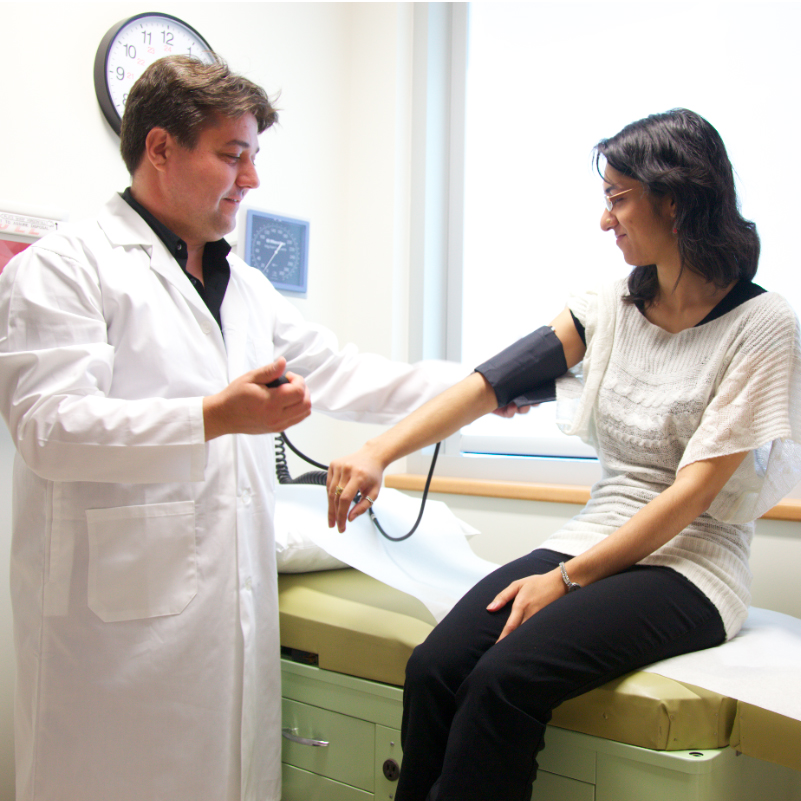Secondary Diseases
Secondary Diseases related to diabetes affect many different organs and develop over time as a direct result of high blood sugar (hyperglycemia) and metabolic dysfunction. Poor blood sugar (glycemic) control predisposes to elevations in blood pressure (hypertension). As a result, diseases of the cardiovascular system are the most common secondary diseases associated with diabetes. In fact, diabetes patients are two to three times more likely than non-diabetes patients to develop hypertension-related heart attacks, strokes, retinopathy (vascular disease of the eye) and nephropathy (vascular disease of the kidney). Retinopathy results in blood vessel overgrowth and bleeding in the eye which can eventually destroy the retina causing vision loss, whereas nephropathy results in destruction of the kidneys as a result of high blood pressure and poor glycemic control. Nephropathy related kidney failure is the leading cause of premature death in young diabetes patients with poor glycemic control, hypertension and high blood cholesterol.
Other types of secondary diseases can be the result of metabolic consequences of diabetes such as hyperglycemic toxicity on cells or toxic adiposity (fat deposition). Gastroparesis (slow stomach emptying), dyslipidemia (abnormal lipid content in blood), non-alcoholic fatty liver disease (NAFLD) and neuropathy (disease of the nerves) are all examples of these types of secondary diseases. Gastroparesis can cause abdominal pain, vomiting, weight loss and malnutrition and the cause is still not well understood. Dyslipidemia and NAFLD are directly related to insulin-resistance and are more common in Type 2 diabetes. Neuropathy is a major cause of morbidity and mortality in diabetes and can range from light tingling sensations, and/or sensory loss, to severe and chronic pain. Neuropathy is also the major cause of lower extremity ulceration and limb amputation in diabetes.
Researchers at the Alberta Diabetes Institute are hard at work deciphering the underlying mechanisms of these secondary diseases associated with diabetes, targeting two key areas; early detection and prevention. These studies range from the discovery stage to clinical trials and span the entire range of secondary diseases discussed above. Currently ongoing studies include Alberta`s Caring for Diabetes Project, medication management of diabetes, the genetics and mechanisms of childhood obesity, energy metabolism by the heart in health and diabetes, cardiovascular lipid accumulation during insulin resistance, vitamin D and bone health in nephropathy, resveratrol in cardiac function, motilin effects in gastroparesis, hemostatic dysfunction in Type 2 diabetes and the effects of nutritional supplements on NAFLD. All of the above studies share the ultimate goal of better understanding diabetes-related complications and improving the quality of life of diabetes patients.
